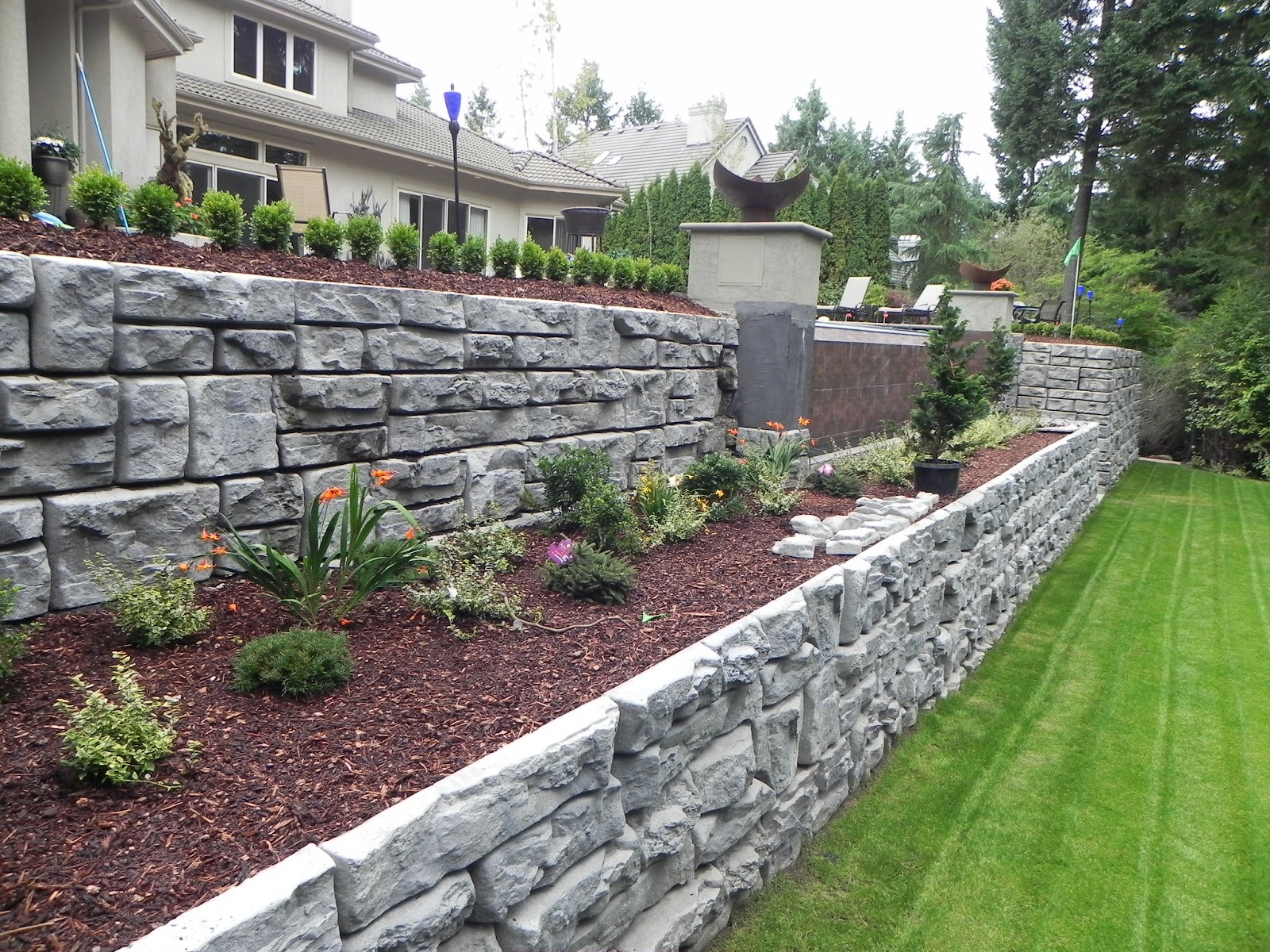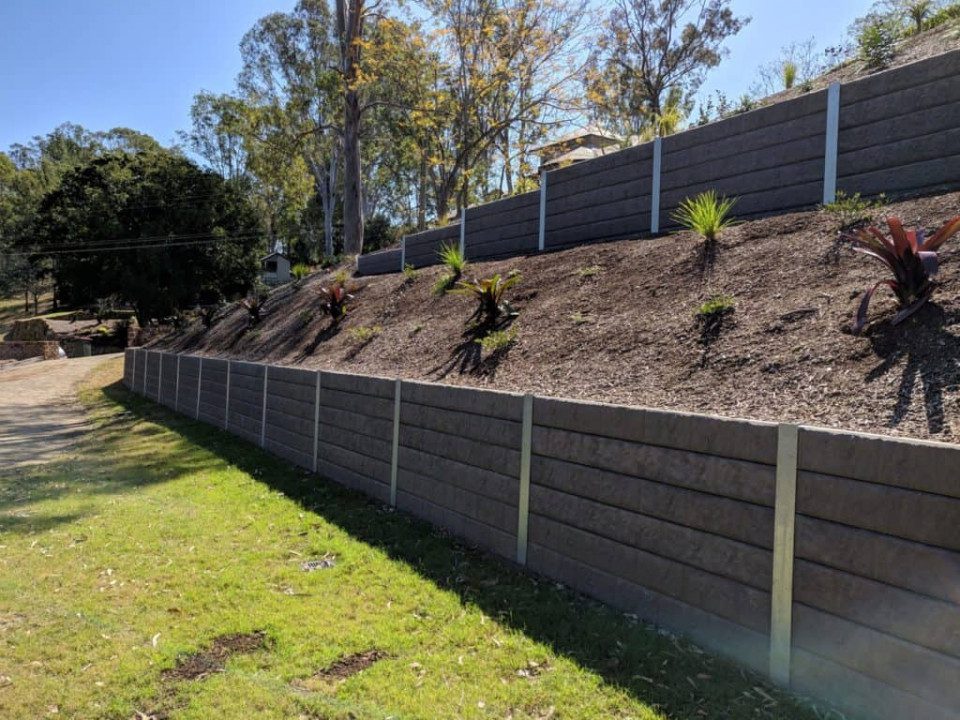Why You Must Invest in Sturdy Retaining Walls Sunshine Coast for Your Home
Why You Must Invest in Sturdy Retaining Walls Sunshine Coast for Your Home
Blog Article
Guaranteeing Architectural Stability: The Relevance of Properly Constructed Keeping Walls in Stopping Incline Failing
In the realm of civil engineering and construction, the value of effectively built keeping wall surfaces in averting incline failure can not be underrated. By checking out the intricate interaction in between these aspects, a deeper understanding of the essential duty that retaining walls play in preserving architectural integrity and protecting against slope failing arises.
Function of Retaining Walls in Security
The indispensability of preserving walls in making certain incline security is extremely important in civil engineering practices. Maintaining walls offer a critical role in protecting against soil erosion, managing water drainage, and keeping the structural stability of inclines. By supporting near-vertical or vertical quality adjustments, retaining walls aid to rearrange lateral stress applied by the dirt, thus minimizing the threat of slope failing.
One trick function of retaining wall surfaces is to neutralize the pressure of gravity acting upon the dirt mass behind them. This is achieved through appropriate style and building and construction, which thinks about variables such as dirt type, wall height, drain stipulations, and potential surcharge loads. By successfully preserving dirt within defined borders, these structures assist to support inclines and stop landslides.
Additionally, preserving wall surfaces add to the visual appeals of landscapes while offering practical benefits. They can produce terraced degrees for landscaping, support streets or structures on hillsides, and improve the general functionality of sloped terrain. Essentially, keeping walls play an important function in preserving slope security and making certain the security and durability of civil engineering projects.
Factors Influencing Wall Surface Efficiency
Aspects that influence the effectiveness of retaining walls include soil homes, wall design, and exterior tons. Soil properties play an important function in identifying the security and efficiency of a keeping wall surface. Elements such as soil kind, cohesion, interior friction angle, and groundwater problems can influence exactly how well a wall retains the dirt behind it. The design of the retaining wall surface is another vital aspect that affects its performance. Proper wall surface design thinks about factors like wall elevation, wall surface kind (e.g., gravity wall surfaces, cantilever walls), support products, drainage systems, and building and construction methods to make certain the wall can withstand the side pressure put in by the retained soil. In addition, external lots, such as surcharge tons from surrounding structures or website traffic, seismic forces, and water pressure, need to be thoroughly evaluated during the design and building stages to make certain the wall can effectively resist these external forces. By taking into consideration these factors thoroughly, engineers can build preserving walls that efficiently stop incline failure and make sure lasting structural integrity.
Layout Considerations for Maintaining Walls
Incorporating the crucial aspects of dirt residential properties and outside tons into the architectural design procedure is necessary for creating efficient keeping wall surfaces that make sure incline stability. When creating keeping walls, designers need to very carefully examine the qualities of read this post here the surrounding dirt, including its drainage, compaction, and kind properties. Recognizing these soil properties is essential for identifying the ideal wall thickness, elevation, and reinforcement required to hold up against the lateral stress applied by the soil mass.
Additionally, external tons such as surcharge tons from neighboring structures or web traffic, along with seismic forces, have to be considered during the layout phase. These loads can substantially impact the stability and efficiency of a keeping wall surface, demanding making use of proper layout techniques and materials to reduce possible failure risks.
In addition, the option of appropriate products, such as concrete, stone, or lumber, need to align with the site-specific conditions and aesthetic demands. Aspect of safety and security factors to consider, drainage provisions, and building strategies are additionally essential aspects that influence the overall design and performance of preserving wall surfaces in protecting against incline failing. By very carefully considering these layout considerations, designers can make sure the architectural stability and long-lasting stability of maintaining walls.

Construction Best Practices for Toughness
When creating keeping walls for ideal durability and longevity, adherence to industry-standard methods and careful interest to detail are critical. To ensure the durability of a retaining wall surface, correct website prep work is necessary. This includes sufficient compaction of the dirt, appropriate drain systems, and guaranteeing the wall's structure is sound. Using top quality materials, such as cinder blocks or natural rock, is vital for the durability of the structure. Furthermore, employing skilled experts with experience in constructing preserving walls can substantially influence the toughness of the end product.
Incorporating reinforcement techniques, such as geogrids or steel bars, can enhance the structural integrity of the keeping wall and prevent potential failures. By complying with these building finest practices, keeping walls can withstand the test of time read the article and successfully avoid slope failure.
Importance of Correct Upkeep
Regular upkeep is essential for maintaining the structural honesty and performance of preserving walls over time. To make certain that keeping wall surfaces reference proceed to execute their designated feature effectively, routine inspections should be carried out to determine any type of indications of wear and tear.

Conclusion
To conclude, maintaining wall surfaces play a crucial role in guaranteeing architectural stability and protecting against slope failing. By taking into consideration factors affecting wall surface performance, sticking to make considerations, complying with construction finest techniques, and executing appropriate maintenance, the longevity of maintaining walls can be made best use of. Retaining Walls Sunshine Coast. It is vital to acknowledge the significance of correctly constructed retaining wall surfaces in preserving stability and stopping prospective threats linked with incline failure
Factors that affect the effectiveness of preserving wall surfaces include dirt residential or commercial properties, wall layout, and external loads. Correct wall layout thinks about elements like wall surface height, wall kind (e.g., gravity walls, cantilever wall surfaces), support materials, drain systems, and construction strategies to make certain the wall surface can stand up to the lateral pressure applied by the kept dirt. By considering these factors thoroughly, engineers can build retaining wall surfaces that effectively stop incline failure and make certain long-lasting architectural integrity.
Upkeep jobs may consist of clearing drain systems to prevent water accumulation behind the wall surface, repairing any type of visible splits or damage, and ensuring that the wall surface is totally free from plant life that might apply pressure on the structure. By taking into consideration factors influencing wall surface performance, adhering to create considerations, adhering to construction best methods, and implementing correct upkeep, the sturdiness of preserving wall surfaces can be made best use of.
Report this page